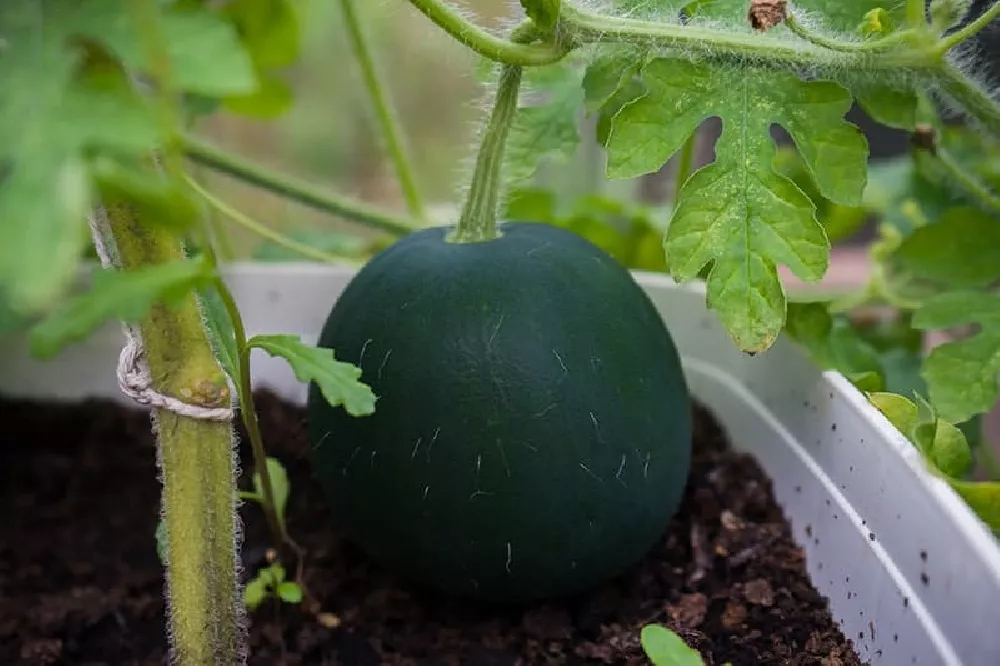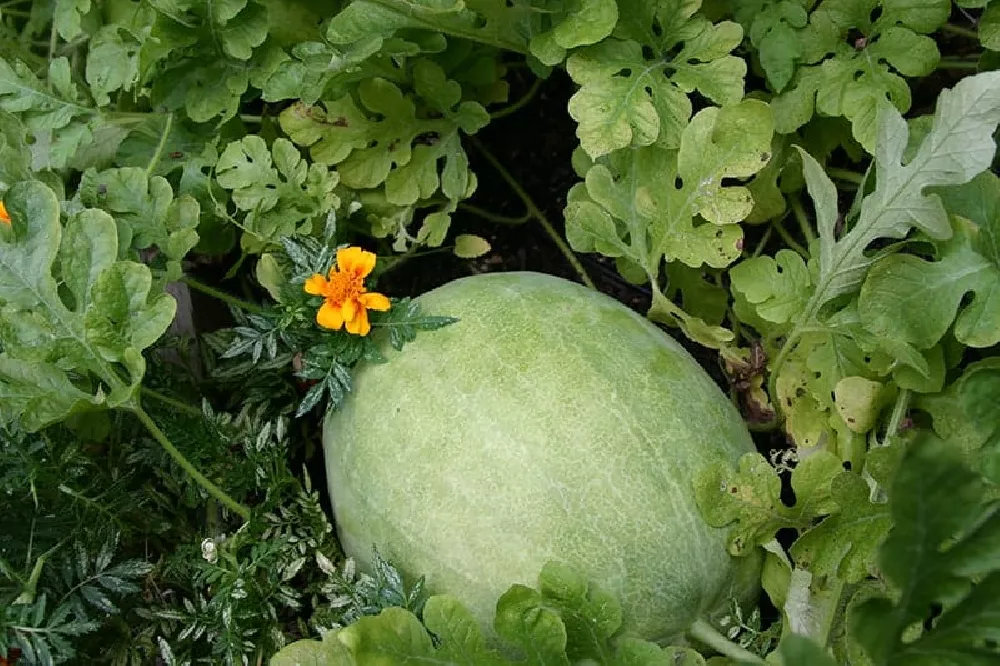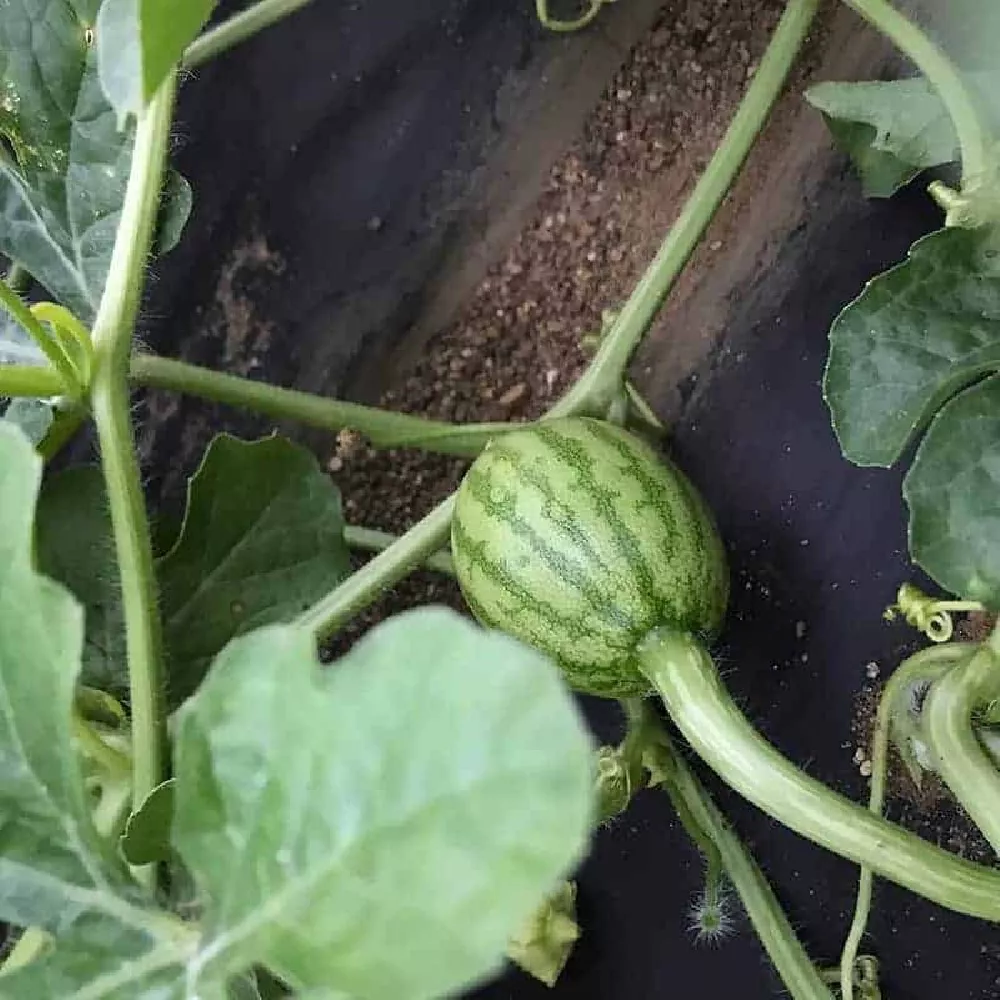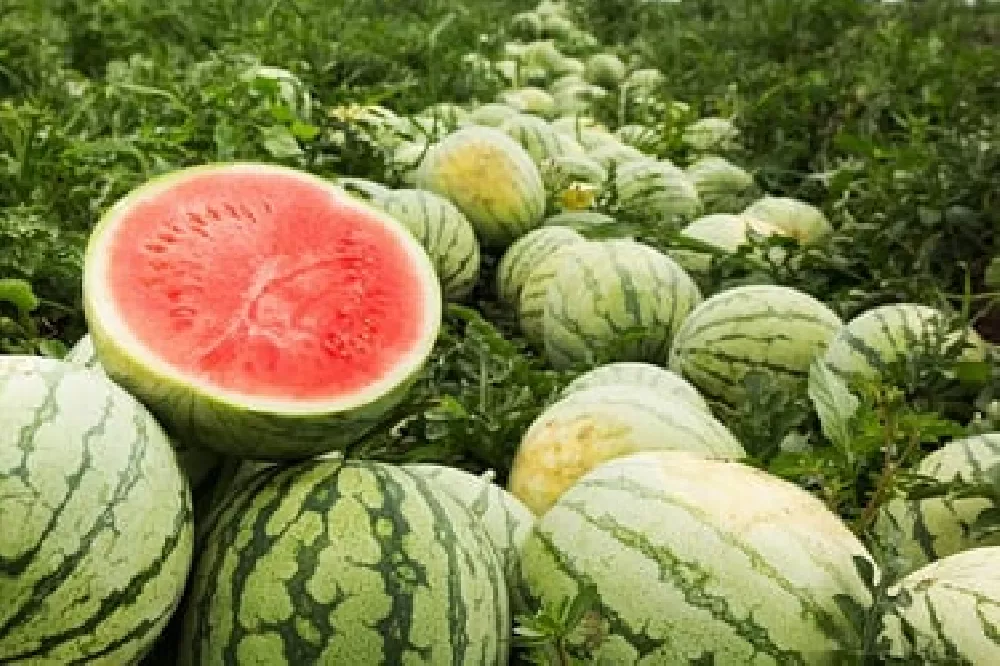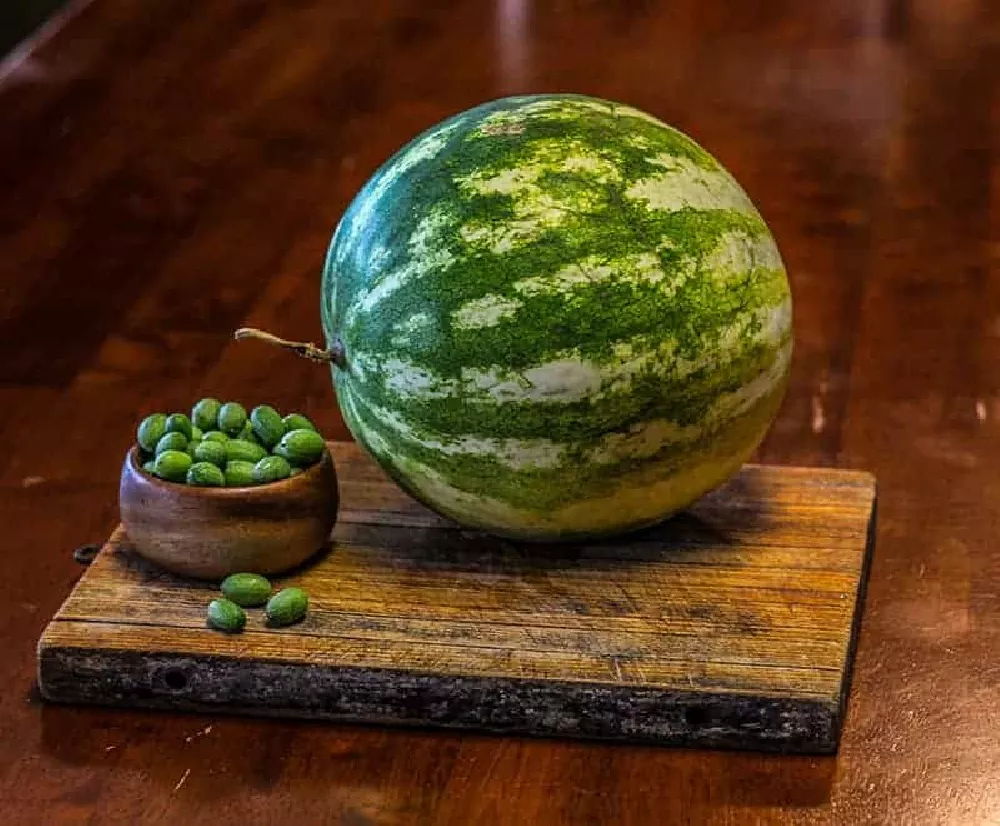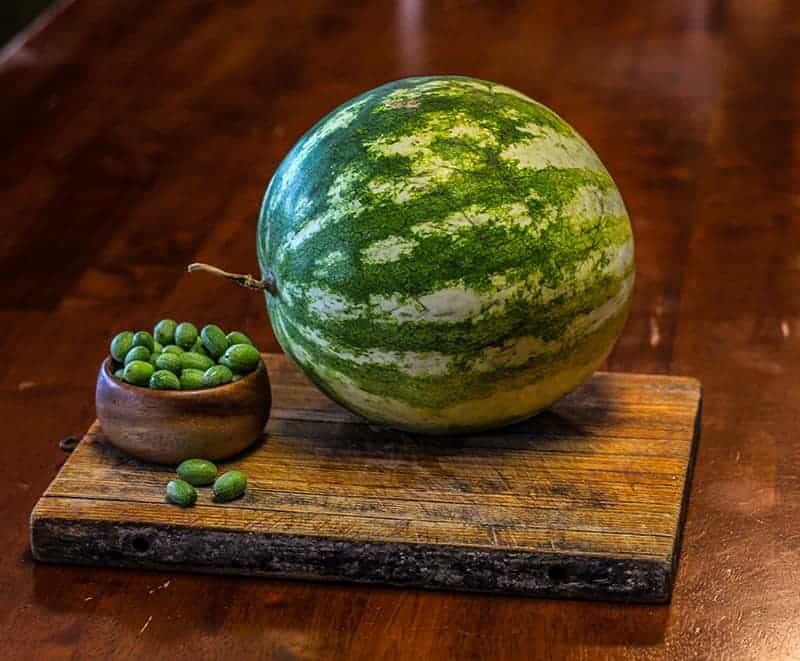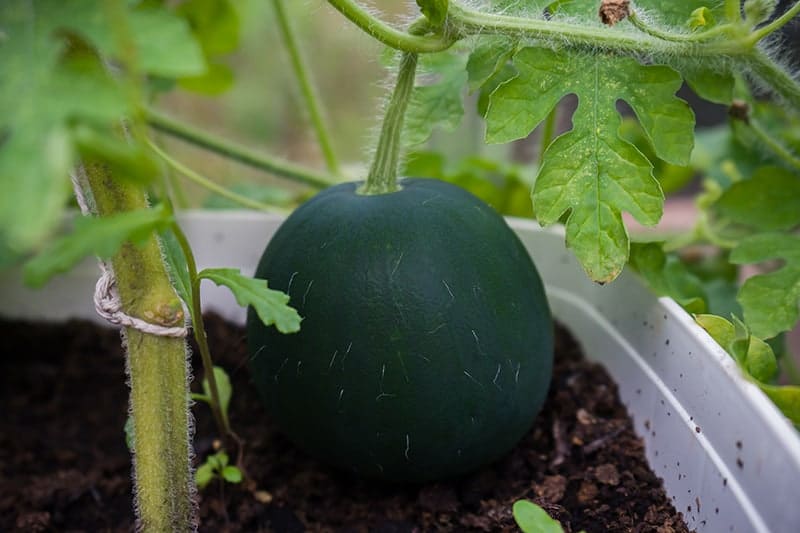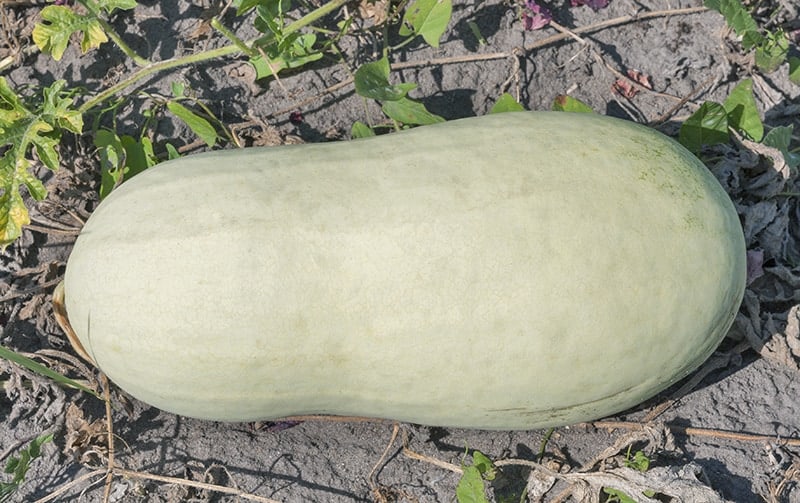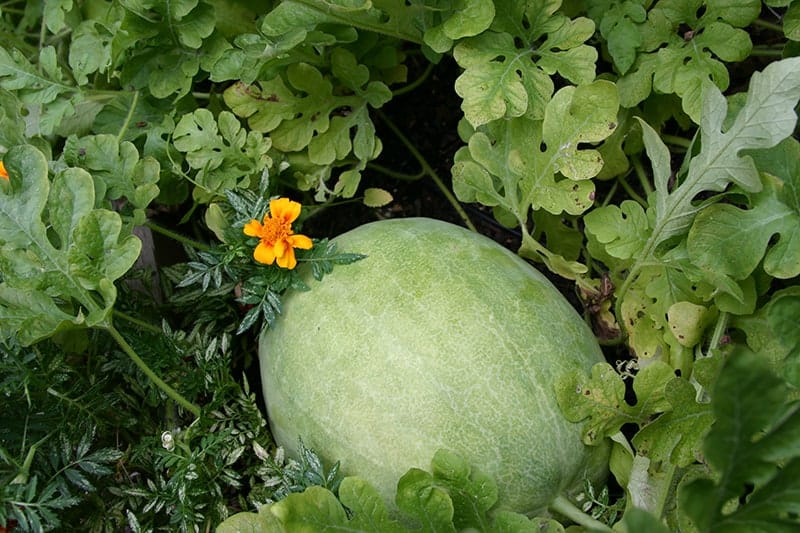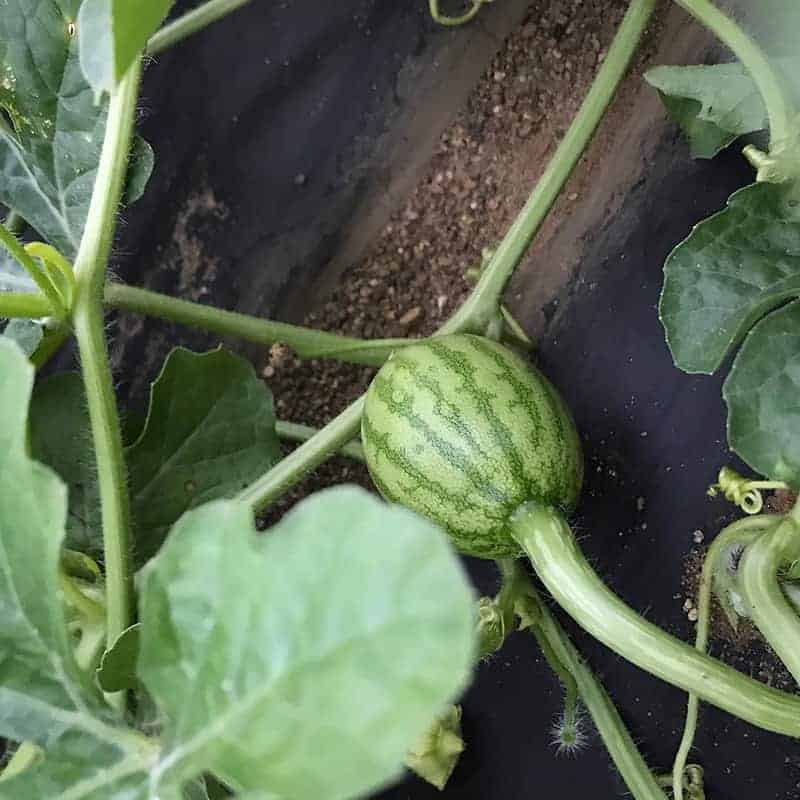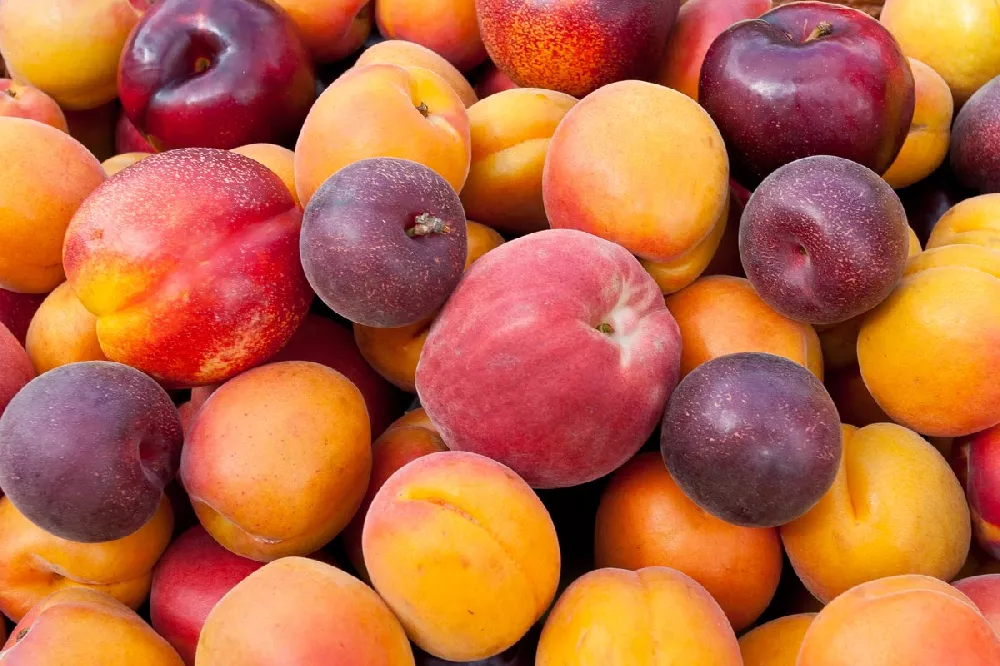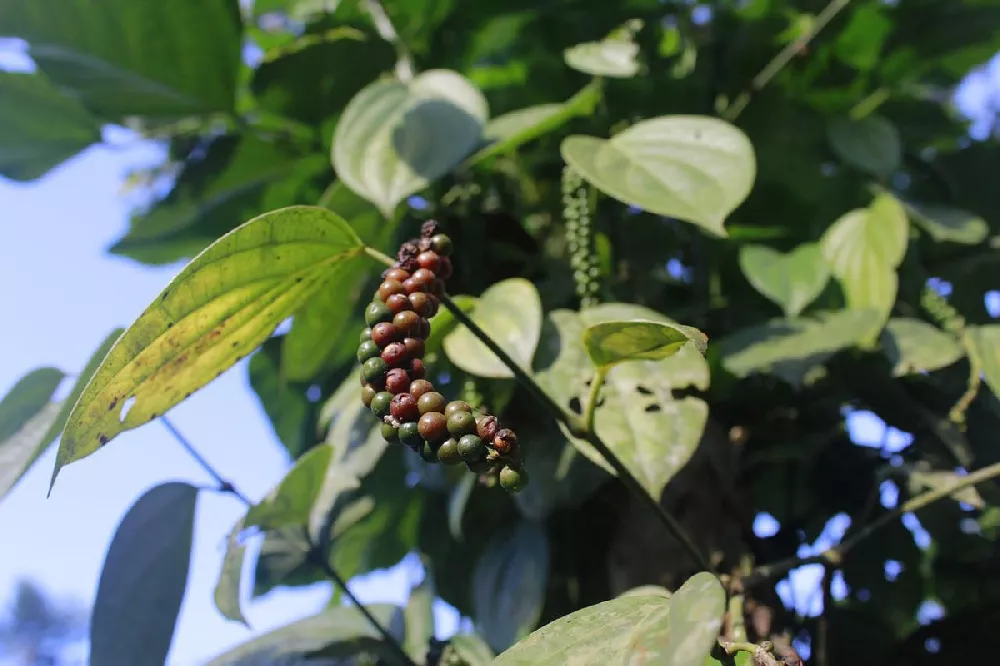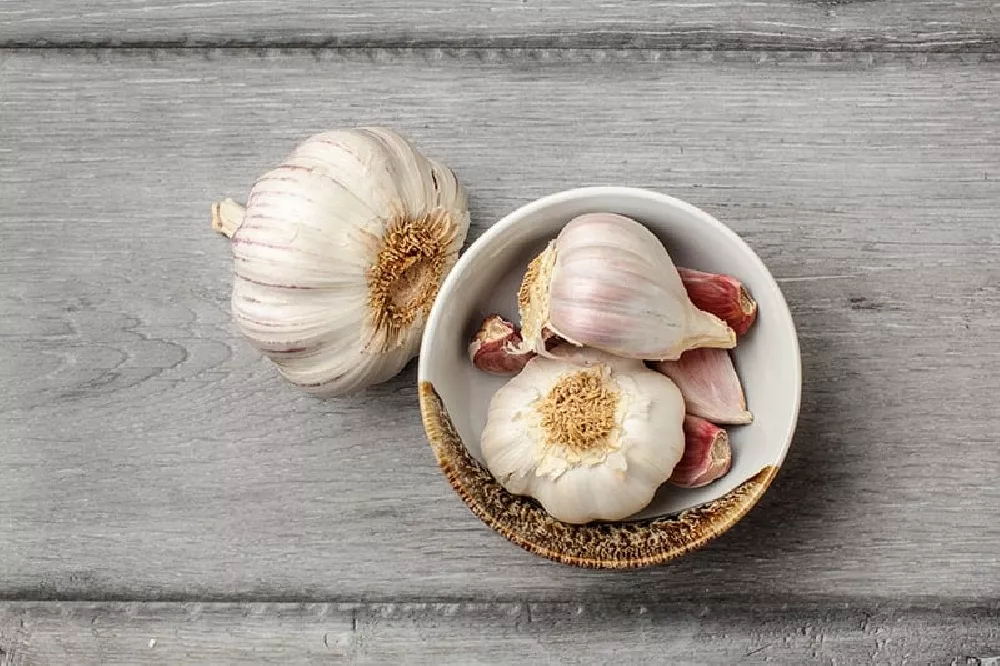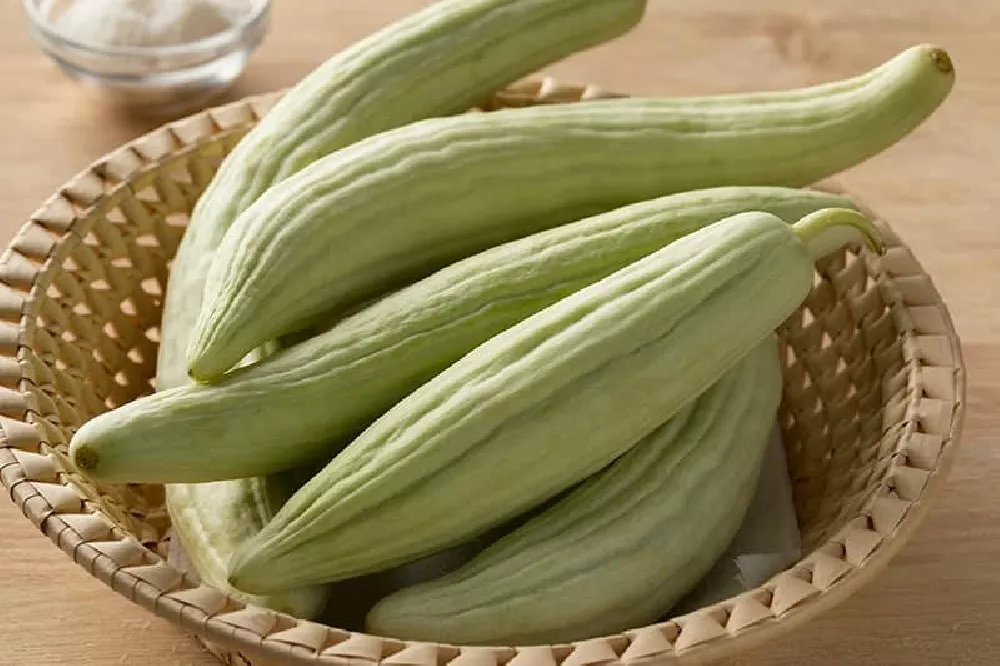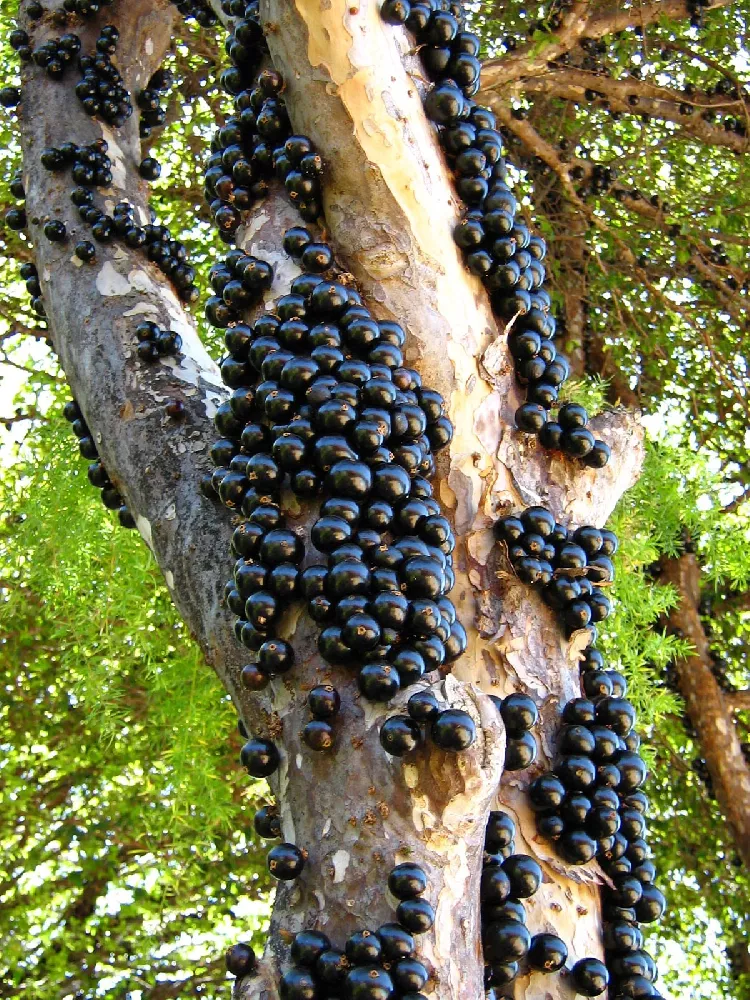- Home >
- Melon Plants >
- Watermelons
Watermelons for Sale - Buying & Growing Guide
GrowJoy - 2.5-Inch Pot - Crimson Sweet Watermelon Plant
GrowJoy - 2.5-Inch Pot - Faerie Watermelon Plant
GrowJoy - 2.5-Inch Pot - Sangria Watermelon Plant
Enter your zip code to find nearby stores that may carry this plant.
Watermelons are a delicious fruit that is refreshing and sweet and are perfect to be enjoyed ice cold on a hot summer day. These fruits grow on vines, and they require four months of consistently warm weather to thrive. Fortunately, though, they can be grown in most USDA hardiness zones, as cooler regions can start seedlings inside before the weather is hot enough to move them outside. There are also some short season watermelons that need less time to produce fruit, which are worth considering if you want to grow watermelons in a cooler climate. Most melons fall into one of four categories of watermelon. These are seedless watermelons, seeded watermelons, picnic watermelons, and icebox watermelons.
Seedless Watermelons
Despite their name, seedless watermelons do contain seeds. However, the seeds are small and underdeveloped, which means they are usually soft and can be eaten without notice. Seedless watermelons also tend to have far fewer seeds than seeded varieties. These watermelons occur as a result of a complex hybridization process. They are more difficult to grow, and require a higher soil temperature for germination, making it difficult to grow them in cool climates, though it is possible through the use of a greenhouse or a heated seed tray.
1. Crimson Sweet
Scientific Name: Citrullus lanatus’ Crimson Sweet’
Mature Size: Up to 8 feet long
USDA Hardiness Zone: 3-11
Light: Full sun
Water: Maintain moist soil
Soil: Well-draining, fertile
This watermelon takes between 80 and 85 days to reach the point at that it can be harvested. It is commercially very popular, due to its sweet and firm flesh, and its ability to be shipped and stored well. In cool conditions outside of a refrigerator, these melons will keep for around three weeks. These melons are on the larger end of the scale, with mature fruit weighing between 16 and 26 pounds. They are an oval shape with the classic pale green and dark green striped skin that most people associate with the common watermelon. These plants can be started from seed sown outdoors once the temperatures are reliably above 65ºF. In cooler regions, sow the seeds indoors four weeks earlier and transplant outdoors after all chances of frost have passed. These plants grow easily in well-draining soil, full sun, with plenty of moisture.
2. King of Hearts
Scientific Name: Citrullus lanatus ‘King of Hearts’
Mature Size: Up to 16 feet long
USDA Hardiness Zone: 3-11
Light: Full sun
Water: Maintain moist soil
Soil: Well-draining, light, fertile
This seedless watermelon is able to go from seed to edible fruit in just 85 days, making it a fairly short season plant, especially suitable for growing in cooler climates where the warm months don’t stretch out as long as those in the south. These melons are produced on a long vine, and so they require a good deal of space to grow, with a deep soil where their roots can extend. They also require pollinating with another melon plant, so they cannot be planted alone. Ensure eight to ten feet of space between these plants, give them a spot with plenty of sunlight, and ensure their soil is kept continually moist when flowers are produced. After the fruit has set, you can gradually reduce watering, as this will help to create sweeter melons. The King of Hearts watermelon has a lightly striped exterior and typically weighs between 14 and 18 pounds. It has small white seeds within the fruit flesh that are edible, so these can be ignored when consuming the melon.
3. Millionaire
Scientific Name: Citrullus lanatus ‘Millionaire’
Mature Size: Up to 18 feet long
USDA Hardiness Zone: 3-11
Light: Full sun
Water: Maintain moist soil
Soil: Well-draining, fertile, sandy
These seedless hybrid melon plants take at least 90 days for their fruits to reach maturity. Each melon will typically weigh between 16 and 22 pounds and have a hard, dark green rind with subtle yellow-green stripes. The flesh of the melon is firm and pink colored, dotted with soft and underdeveloped white seeds that are edible. These plants are commercially popular, as they produce a high yield of fruit, and they transport well. These plants are grown from seed, requiring a warm soil temperature of above 70ºF to germinate. Germination occurs between 4 and 14 days and can be achieved directly in soil outside, or in seed trays inside, depending on the local climate. The roots of these plants can extend as far as six feet underneath soil level, so ensure they are planted in a deep bed that is well-draining and fertile.
Seeded Watermelons
Seeded watermelons contain large, hard, seeds, which can be pale brown or dark brown-black in color. Many people choose to spit these seeds out when eating a seeded watermelon, though some cultures grow watermelons specifically for the nutritious seeds hiding within the fruit flesh.
4. Estrella
Scientific Name: Citrullus lanatus ‘Estrella’
Mature Size: Up to 18 feet long
USDA Hardiness Zone: 3-11
Light: Full sun
Water: Maintain moist soil
Soil: Well-draining
This watermelon produces edible fruit within 85 to 90 days. The fruits are oval and uniform in shape, with a thick rind that has dark and light green striping. The inner flesh is firm and dark pink and has small dark brown pips embedded in it. This is a popular variety of watermelon, known for its reliably sweet flavor. Mature melons of this type typically weigh between 20 and 24 pounds.
5. Moon and Stars
Scientific Name: Citrullus lanatus’ Moon and Stars’
Mature Size: Up to 18 feet long
USDA Hardiness Zone: 3-11
Light: Full sun
Water: Average water needs
Soil: Well-draining
This heirloom melon dates back to 1926, where it was first produced by the Henderson seed company. As seedless varieties gained popularity, this type of melon was thought to be extinct in the 1980s but was rediscovered and reintroduced several years later. It has recently regained popularity, mostly due to its interesting rind. The dark green rind is ridged, and covered with yellow spots and speckles, which look like the night sky, hence the name ‘Moon and Stars.’ These melons can be round or oval-shaped, with bright red flesh. They typically weigh around 25 pounds but have known to grow in excess of 40 pounds. These melons have plentiful dark seeds contained within their flesh, which may be off-putting to some people, but a delight to those who enjoy eating the healthy seeds. They thrive in moist, well-draining soil, and though they prefer fertile soil, they can grow in average or poor soils as long as they drain well.
Icebox Watermelons
Icebox watermelons include the smallest types of melons that would fit inside an icebox. One icebox watermelon would provide enough fruit to feed one person, or for a snack for a small family. These melons typically range in weight from around 6 to 16 pounds.
6. Sugar Baby
Scientific Name: Citrullus lanatus ‘Sugar Baby’
Mature Size: Up to 12 feet long
USDA Hardiness Zone: 3-11
Light: Full sun
Water: Maintain moist soil
Soil: Fertile, well-draining, organically rich
These are a particularly sweet-tasting variety of melon, with one of the highest sugar contents of all watermelons. They are a short season melon, which produces mature fruits in between 75 and 80 days. As an icebox watermelon, this melon is of small size, growing to a typical weight of between 8 and 10 pounds, with a maximum size of 8 inches across. Sugar Baby melons are round, and have a glossy, smooth, dark green rind, with subtle veining. Their flesh is crisp, sweet, and bright red. It has occasional small tan-brown pips throughout the flesh. These melons grow on medium-sized vines that can extend to up to 12 feet long. They need a fertile, well-draining soil, which has a high organic content. These watermelons perform best in consistently moist soil and would benefit from a drip irrigation system to ensure the soil is not allowed to dry out. Each vine typically produces 2 or 3 melons each year.
7. Tiger Baby
Scientific Name: Citrullus lanatus ‘Tiger Baby’
Mature Size: Up to 12 feet long
USDA Hardiness Zone: 4-10
Light: Full sun
Water: Maintain moist soil
Soil: Well-draining
These melons gained their name from their rind, which resembles a young tigers fur. It is a medium green-grey, adorned with deep green stripes. The flesh of the fruit is dense, bright red, and very sweet tasting, with seeds. These small melons have a typical weight of between 7 and 8 pounds, and on average, take 90 days to reach maturity. Their vines are tender and should not be planted until all risk of frost has passed. In cooler climates, get a head start by sowing seeds indoors and then planting outside when seedlings are around 8 inches tall.
Picnic Watermelons
Picnic watermelons are so-called because they are the right size for feeding a whole family on a picnic. These watermelons have a traditional watermelon look and can range in weight from 20 to 45 pounds.
8. Black Diamond
Scientific Name: Citrullus lanatus’ Black Diamond’
Mature Size: Up to 20 feet long
USDA Hardiness Zone: 3-11
Light: Full sun
Water: Average water needs
Soil: Well-draining soil
These plants produce enormous watermelons that can exceed 50 pounds in weight when mature. The rinds of these melons are hard and tough, with the firm and juicy flesh lying beneath. These melons grow on vigorous vines that scramble across the soil or can be trained to grow on a structure. They require plenty of space to produce large fruits, and due to their size, the melons can take more than 90 days to reach maturity. They require at least six hours of sun each day, but a position of full sun will result in a better yield.
9. Charleston Gray
Scientific Name: Citrullus lanatus’ Charleston Gray’
Mature Size: Up to 18 feet long
USDA Hardiness Zone: 3-11
Light: Full sun
Water: Maintain moist soil
Soil: Well-draining
These large watermelons are named after their thick rind, which is a dark green-gray color with creamy-yellow mottled markings. They were developed in the mid-1950s as part of a program to produce disease-free watermelons, and are known to be one of the best American watermelons ever produced. They take 87 days to reach maturity and grow to weights of between 20 and 40 pounds. Charleston Gray watermelons are a long oblong shape, with a virtually fiber-free flesh that is dotted with dark seeds.
Orange and Yellow Watermelons
These watermelons are so-called because they have flesh that will be yellow-orange in color. They can be round or oval shapes, and seedless or seeded, and weigh anywhere between 10 and 30 pounds.
10. Desert King
Credit to Kim Unertl
Scientific Name: Citrullus lanatus’ Desert King’
Mature Size: Up to 16 feet long
USDA Hardiness Zone: 3-11
Light: Full sun
Water: Average moisture needs
Soil: Well-draining
This watermelon has pale green skin and bright yellow-orange flesh. Fruits will weigh in the region of 20 pounds and typically take 85 days to mature. Unusually for a watermelon plant, this vine is drought-tolerant and will survive short periods of time in dry soil. However, it will perform best in moist soil and particularly needs plenty of moisture while producing flowers and setting fruit.
11. Yellow Baby
Credit to Samuel Hansen
Scientific Name: Citrullus lanatus ‘Yellow Baby’
Mature Size: Up to 12 feet long
USDA Hardiness Zone: 3-11
Light: Full sun
Water: Maintain moist soil
Soil: Well-draining
This watermelon was produced in Taiwan in the 1970s, as a result of hybridization between a male Chinese melon and a female American Midget melon. The resulting watermelon has vibrant yellow flesh, which is crisp and sweet and has thin skin. Some growers believe it is even sweeter tasting than the common watermelon. The fruits mature between 74 and 84 days, weighing in at between 8 and 10 pounds. Once picked from the vine, these melons have a short shelf life of just 4 to 6 days, making them difficult to transport for sale, and meaning they are predominantly grown by home gardeners.
